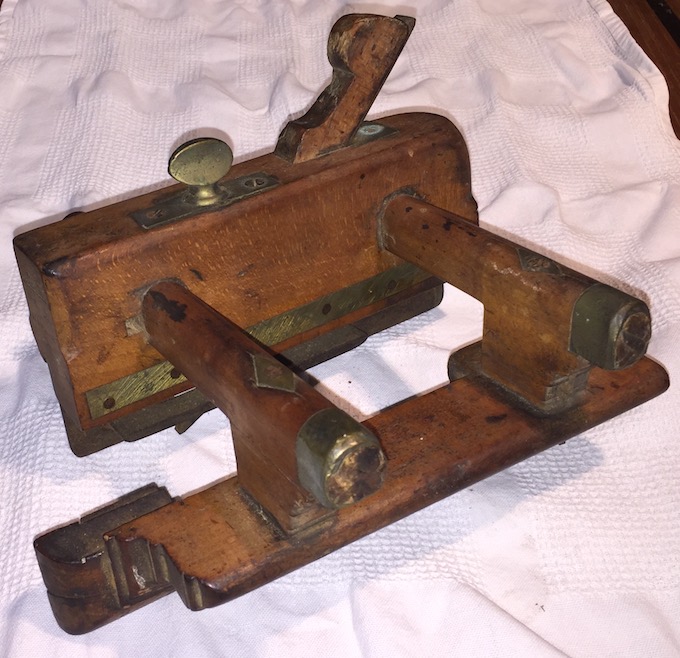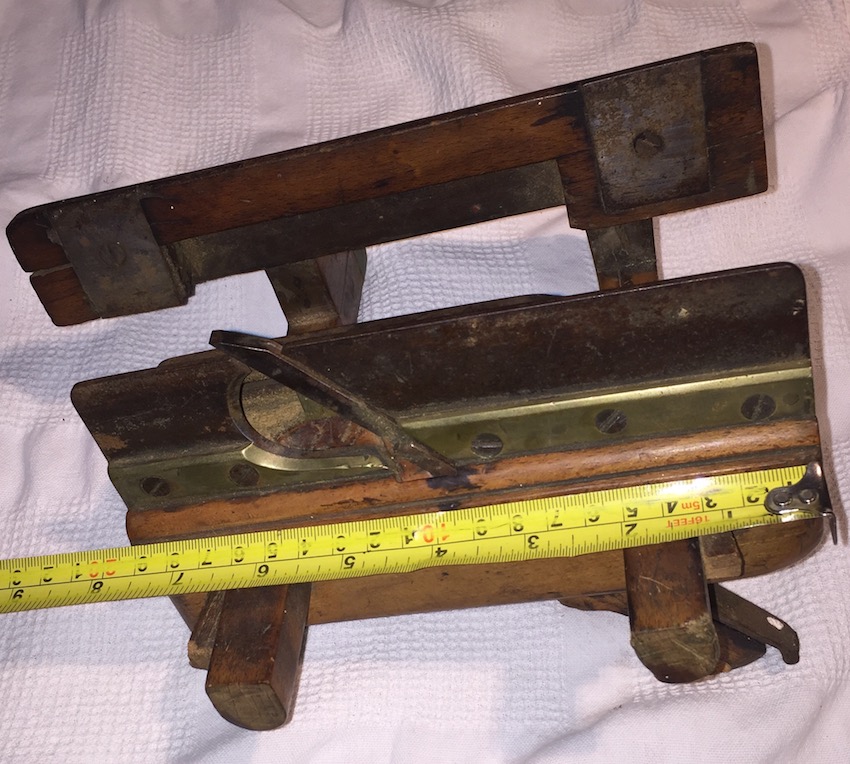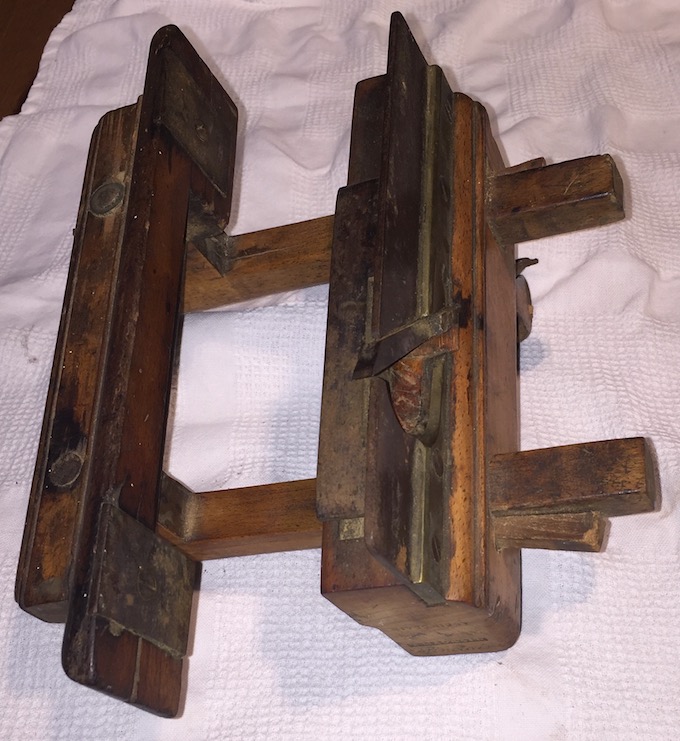I have been helping a widow clear out and sell her late husband's workshop. Many of the tools she has donated to Tools with a Mission (TWAM) via me, but this won't work for old woodies as the training in e.g. Uganda is on metal planes and this is what they send. I know what to do with regular woodies, but have not owned a wooden plough plane. It looks as if it will fetch a few quid on ebay (she wants to donate the profit) so I want to do it right for her. Here are a few pictures. The plane is in good condition apart from one crack in the support for the arms (see last picture), but it is usable. The makers stamp is Sinclair (and the possibly first owner's stamp is also a Sinclair). The blade is 6 mm wide (not 1/4"). The arms are locked with wedges but I am pretty sure the wedges are not original. Anyone have any information or ideas about age, the maker, or value?



















































